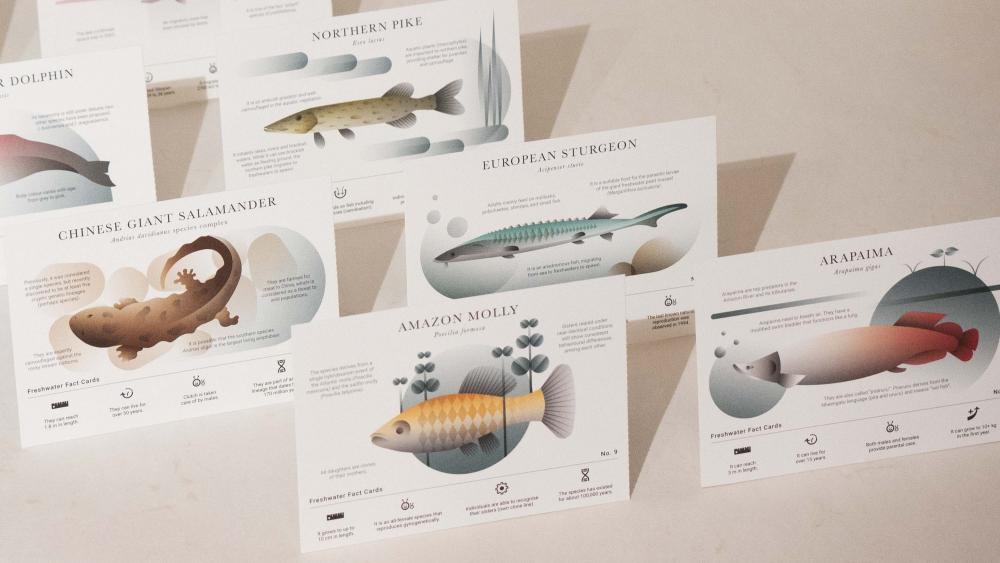
Many thanks to Studio Adén for the beautiful illustrations.
Our planet is experiencing a dramatic decline in biodiversity. Freshwater plants and animals are particularly at risk. Stressors such as climate change and a growing demand for water and energy put freshwater ecosystems all over the world under extreme pressure. As a result, the habitats of many species that are dependent on certain conditions for survival are diminishing. By contrast, adaptable species, some of which are invasive, are capable of spreading to new areas. In their studies, IGB scientists show where and why freshwater habitats are changing, and which actions can be taken to preserve freshwater biodiversity throughout the world.
To truly illustrate their research knowledge of freshwater species, scientists from IGB and the Alliance for Freshwater Life have compiled and featured impressive, dramatic, and encouraging facts about 20 freshwater species. Many of them could act as umbrella species because their conservation also ensures the survival of many other species; others are of particular importance for freshwater research, and some are invasive species and may affect or threaten native flora and fauna. The portraits spotlight species that are normally inconspicuous as they often live below the water surface or in remote regions – and are therefore all too often forgotten when it comes to species conservation.
Where do I find the cards?
Using the hashtag #FreshwaterFactCards on Twitter, we present one of the 20 species every week, and complement the facts with further information from studies, conservation programmes and the community. Those who do not want to wait, can find all 20 Freshwater Fact Cards on our website right now. The ‘real’ cards can be picked up at one of our events – for instance at the Umweltfestival in Berlin's Spreepark on 20 August 2022.
Are the facts also available in other languages? With your help: yes!
A fact card on the Amazon fish Arapaima in German and English is great, but it would be even better if we could make the facts available in Portuguese and Spanish too. The same goes for the Chinese giant salamander or the giant barb, the national fish of Cambodia. With your help, the Alliance for Freshwater Life would like to present the 20 species on its website in ‘their’ respective mother tongue. If you can offer translation support for one of the species, we would very much appreciate your help and an email to us.
Many thanks to all the colleagues who supported the fact-finding: Lisa-Lena Heinrich, Vanessa Bremerich, Robert Arlinghaus, David Bierbach, Jürgen Geist, Jörn Geßner, Sabine Hilt, Ivan Jaric, Jonathan Jeschke, Stefan Linzmaier, Luc De Meester, Simon Moesch, Michael Monaghan, Agata Mrugała, Paulo Petry, Fabian Schäfer, Vera M.F. da Silva, Matthias Stöck, Max Wolf, and Justyna Wolinska.
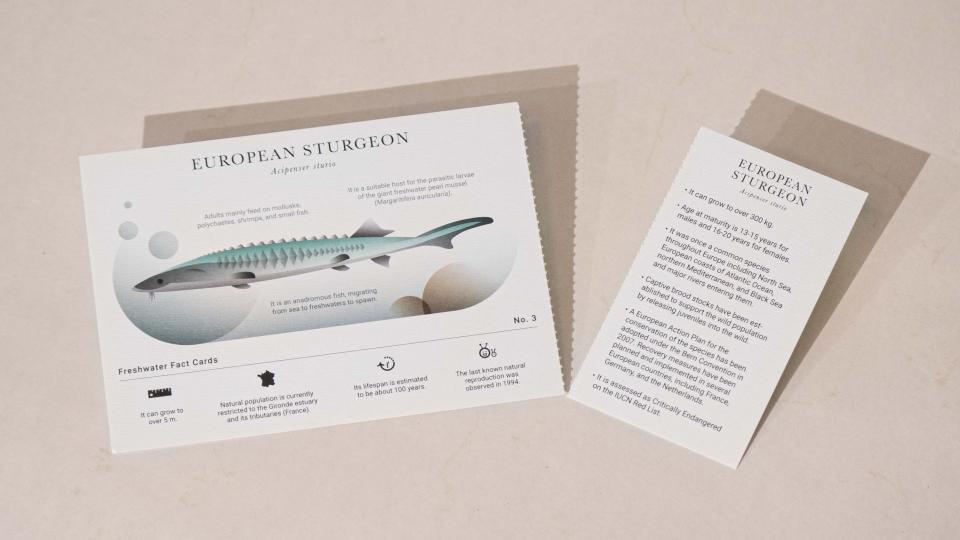
The fragmentation of river systems is one of the reasons, alongside overfishing, that the European sturgeon (Acipenser sturio) is threatened with extinction. Obstacles such as dams are a challenge to many aquatic organisms. Migratory fish, however, are particularly strongly affected because they are no longer able to reach their spawning grounds. | Design: Studio Adén
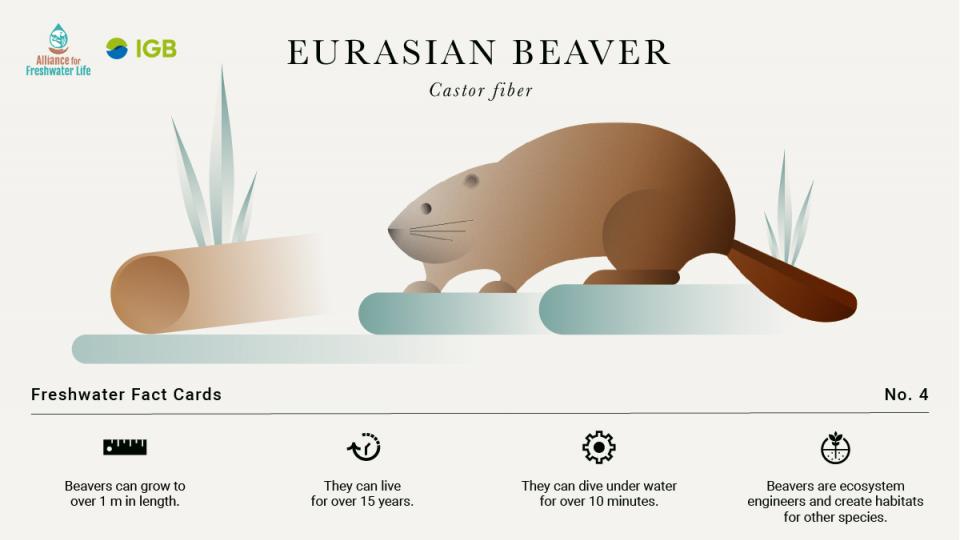
The Eurasian beaver (Castor fiber) has experienced a sharp decline in its population and range in the past – to the point of extinction in many countries. But the species has now returned to many European regions. This success is due largely to conservation measures and reintroduction projects. | Design: Studio Adén
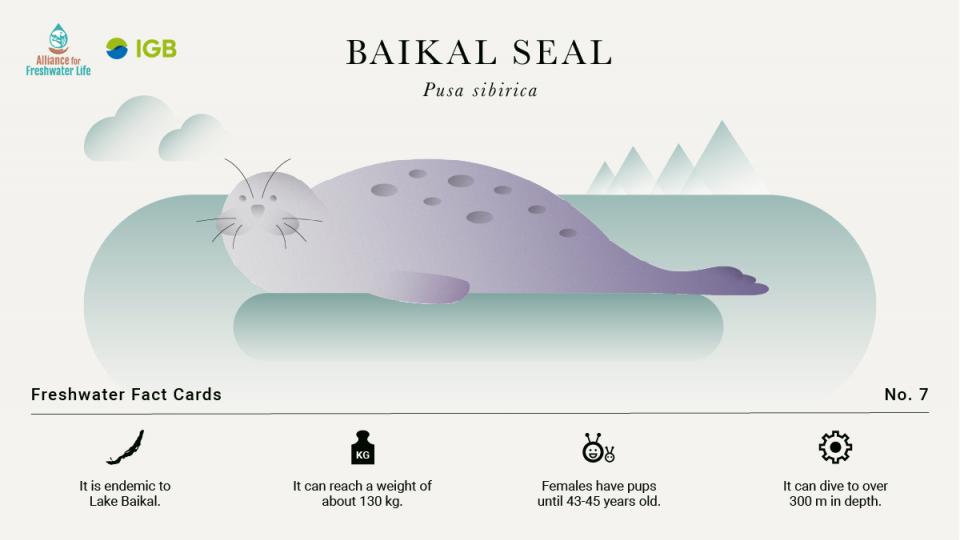
The Baikal seal (Pusa sibirica) is the only seal species that lives exclusively in freshwater. Since the young are raised on the ice, the Baikal seal may be vulnerable to future climate change. | Design: Studio Adén
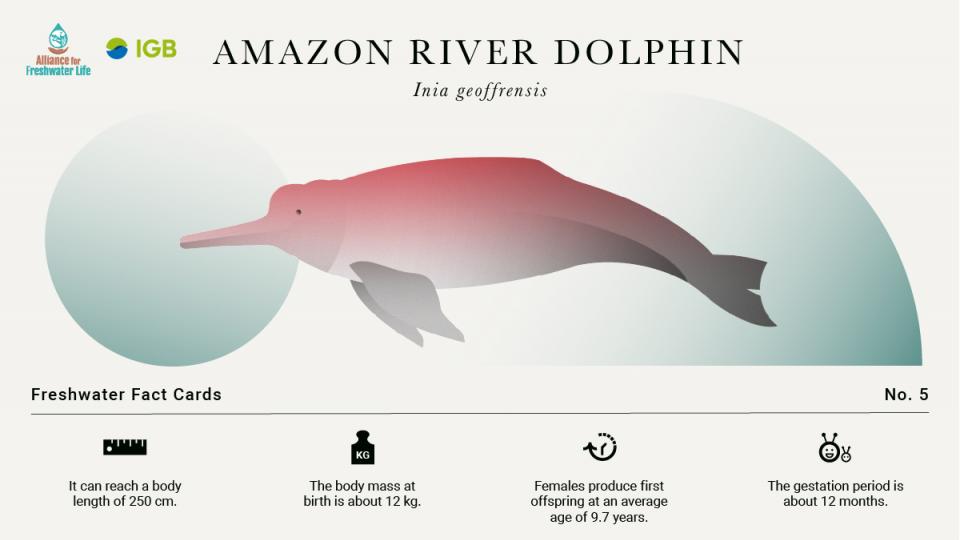
Populations of the Amazon river dolphin (Inia geoffrensis), which can grow up to a length of 250 cm, are dwindling, especially due to illegal hunting. This is compounded by fact that the animals get caught up in fishing nets, where they often die. Dams and other regulatory measures restrict their habitat. | Design: Studio Adén

Populations of the freshwater pearl mussel (Margaritifera margaritifera) have declined by more than 90 per cent since the 1930s. One of the main causes is considered to be the siltation of river beds: the Holarctic species, which may grow up to 16 cm, needs stable cobble and gravel substrates with only small quantities of fine material. | Design: Studio Adén






